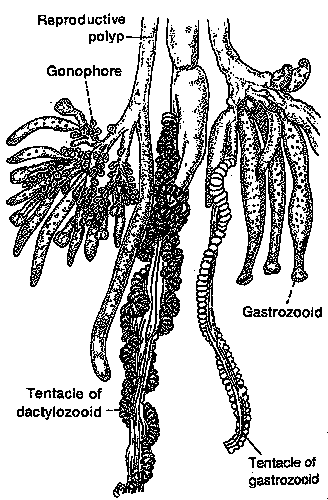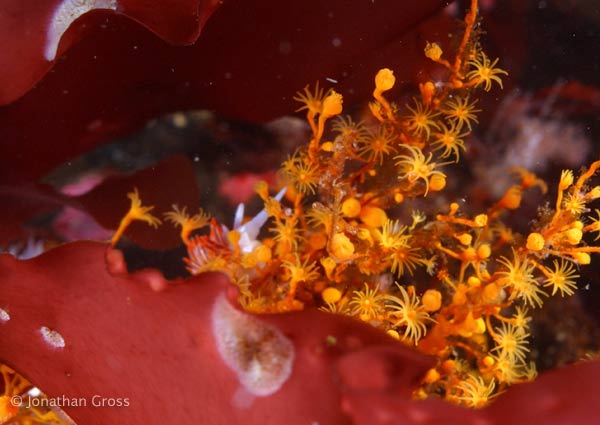
| Hydrozoa | ||
| Cnidaria | Hydrozoa |
| Parent: Cnidaria | Sister: Anthozoa | Child: Siphonophora | Child: Hydroidea | Other Children: See below |

This class includes hydroids and hydromedusae. $ Medusae small. $ Cnidocysts epidermal.
This very diverse class of cnidarians many of which have a true alternation of generation in its reproductive cycle. That is, they passes through both the medusa and the polyp phase. Many groups secrete a chitinous skeleton in the polyp stage. In some groups the polyp stage is colonial and secretes a calcareous skeleton, like a coral. There are seven orders altogether, including:
Trachylina - medusa stage only. These are perhaps the most primitive Hydrozoa. : Gonionemus
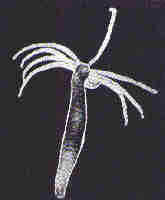
Hydra - a small simple freshwater Hydroid,
named after a mythical Greek monster
![]() Hydroida
- Ordovician? to Recent - colonial attached polyps. The free-floating medusa stage may be present or absent. Includes most types of Hydrozoans. Freshwater or marine, solitary or colonial, soft-bodied or with skeleton. There are two suborders: Anthomedusae (Hydra, etc) and Leptomedusae. In the latter the polyps always colonial. e.g. Obelia (left), Sertularia
Hydroida
- Ordovician? to Recent - colonial attached polyps. The free-floating medusa stage may be present or absent. Includes most types of Hydrozoans. Freshwater or marine, solitary or colonial, soft-bodied or with skeleton. There are two suborders: Anthomedusae (Hydra, etc) and Leptomedusae. In the latter the polyps always colonial. e.g. Obelia (left), Sertularia
![]() Siphonophora
- Large and complex swimming or floating colonies, with division of labour. Jellyfish-like, but with a float or sail-like structure. Mainly tropical. Includes the unusual Portuguese Man-of-War (genus Physalia).
Siphonophora
- Large and complex swimming or floating colonies, with division of labour. Jellyfish-like, but with a float or sail-like structure. Mainly tropical. Includes the unusual Portuguese Man-of-War (genus Physalia).
Milleporina (should be Milleporida?) (Tertiary - Recent) - Reef builders, massive calcium carbonate skeleton. Marine. Also called Stinging Coral and Fire Coral. The Milleporina and Stylasterina have in the past been included together under the order Hydrocorallida
Stylasterina (should be Stylasterida?) (Tertiary - Recent) Reef builders, very like the Milleporina, but with a thick layer of tissue overlying the skeleton
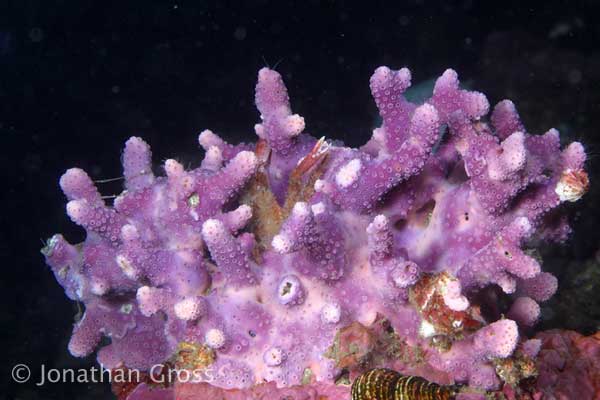
Spongiomorphida (Triassic - Jurassic). Massive colonies with radial pillars united by horizontal bars. Resemble Stromatoporoids.
Chondrophora: Colonial or specialized polypoid individuals, e.g. Velella
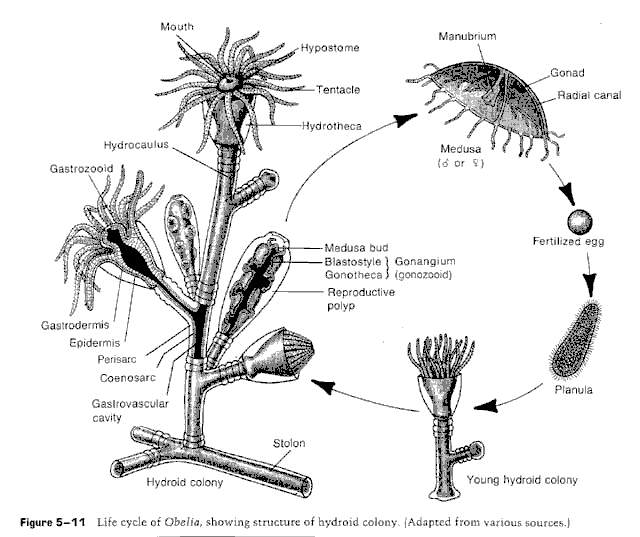
The above illustration is of Obelia, a Hydroid that passes through both the medusa and the polyp phase. This organism goes through stages where it is in effect a different organism, a true metamorphosis .
The philosopher and inventor Arthur M. Young observes that the life cycle of this simple organism passes through a complete series of stages according to process theory:
"(1) starts as a single cell [the fertilized egg]; (2) becomes multicellular [3] acquires a shape (identity) [planular stage]; (4)fastens to the ocean floor [hydroid colony]; (5) grows in plant-like fashion; (6) flowers break off into mobile jellyfish (the animal stage); (7) fertilization."
[The Reflexive Universe, p.122]

Hydrozoan colonies frequently exhibit polymorphism, with different polyps taking on different morphologies and performing different functions (reproduction, feeding, etc.). Each colony is a super-organism, like an ant-hive.
